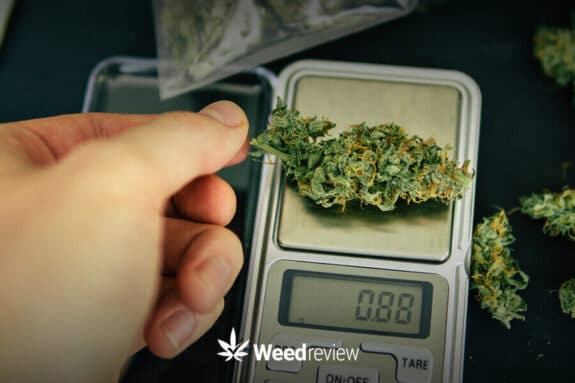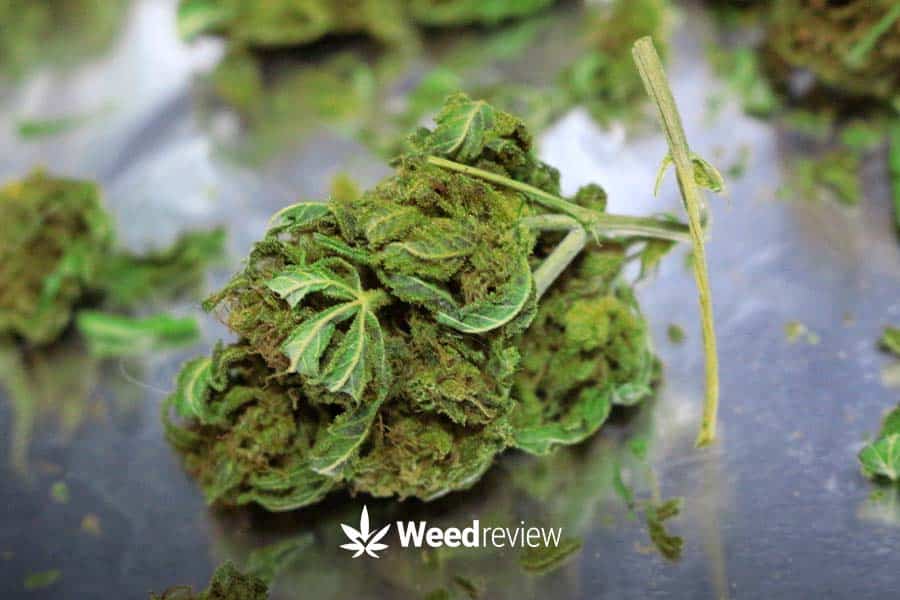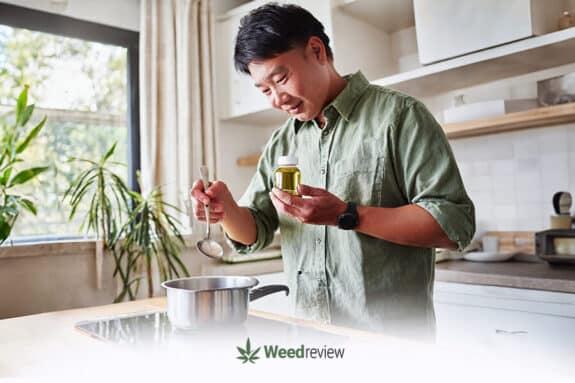
Cannabis Decarboxylation: How to Decarb Weed

Table of Contents
Decarboxylation is a crucial process in medical cannabis consumption that transforms the raw plant material into a potent and psychoactive substance. By applying heat, the inactive compounds in cannabis undergo a chemical reaction, activating the desired cannabinoids like THC and CBD. Understanding and mastering the art of decarboxylation is essential for maximizing the medicinal benefits of cannabis.
In this article, we will explore the science behind decarbing, the ideal temperatures for the process, and two popular methods to decarb cannabis: using an oven and a stove.
What is decarboxylation?
Decarboxylation naturally happens by vaping or smoking the cannabis flower. The high heat activates the cannabinoids, which allows them to interact with the endocannabinoid system.
With edibles & gummies, this step must be performed before cooking.
The THC in cannabis is actually tetrahydrocannabinolic acid (THCA), which doesn’t get you high. To take advantage of the medicinal and psychoactive effects, the THCA needs to be converted to THC using the decarboxylation process.

The same can be said for cannabidiol (CBD), the non-psychoactive cannabinoid in weed. CBDA is the precursor to CBD.
On their own, CBDA and THCA cannot interact with our bodies that well. The heat helps them transform into chemicals that have scientifically proven health benefits for us.
It takes more time to convert CBDA into CBD than for THCA into THC. Therefore, high CBD strains will decarboxylate slower than those with high amounts of THC.
Decarbing happens because THCA has an extra “carboxyl” ring in its natural form. Applying heat to THCA dissolves that ring, which causes it to turn into THC. This makes it more bioavailable for your body to absorb, hence why you get high, feel your pain go away, sleep better, eat more, and find comfort from nausea.
Oxygen will also cause the decarboxylation process, although very slowly. This is why it’s important to store your cannabis in a cool, dry, and dark place, as the cannabinoids will slowly evaporate.
What is the best temperature for decarboxylation?
A temperature range of 90°C and 130°C is well suited for decarboxylation of major cannabinoids. The decarbing process is in the sweet spot in this range.
Low continuous heat is better than fast, quick heat for decarbing weed for edibles. This is because compounds like terpenes and flavinoids are volatile and can evaporate at high temperatures.

Terpenes provide the smell and flavour profile of cannabis flowers. If you heat them past 150°C, they will evaporate or degrade. This will reduce the potency and overall effects of marijuana.
THC will decarb best at temperatures of 110°C for up to 30 minutes. CBD decarboxylates best for a longer time (45 minutes) at 110°C.
If you want to speed things up, you can try a higher temperature of 130°C for 10-15 minutes.
If it is a 1:1 CBD/THC strain, then the method won’t change, but whatever temperature you choose will favour one side of the ratio. A lower, longer bake will activate more of the CBD, and a faster, hotter bake will preserve mostly THC.
As you decarb more marijuana flowers, you can experiment with different temperatures and timings. Be sure not to heat them at higher temperatures.
How to decarb weed using an oven
You will need at least an hour for the decarboxylation process. You should also keep an eye on it while it bakes in the oven.
Materials needed:
- Parchment paper
- A metal baking sheet
- An oven
- Cannabis grinder or scissors
- Cannabis
Step-by-step directions
- Preheat your oven to 115 °C and place the oven rack in the middle of the oven. This will make sure that there is even heat distribution throughout the process.
- Lay out the parchment paper on the baking sheet.
- Coarsely grind or cut up the weed and disperse evenly on the pan. Don’t make it too fine, or it will burn quickly.
- Heat for 35-40 minutes, stirring once or twice throughout that time
- Take the weed out when it is golden brown and let it sit for 30-35 minutes at room temperature.
- After it has cooled, you can then freely infuse it into a base or store it in an airtight container.
You can also decarb your weed leaves to use the THC in them for edibles. Simply follow the same process as below but spread the fan leaves out on a baking sheet.
If you plan on doing this regularly, it is better to get an external oven thermometer for temperature accuracy. Conventional ovens tend to keep the temperature within a range instead of being exact.
How to decarboxylate weed using the stove
Another method involves using a pot of boiling water and a mason jar to decarboxylate your cannabis. Use this process if you don’t want the smell of decarbed weed to fill your home.
Materials needed:
- A medium to a large mason jar with a lid
- Metal cooking pot
- Water
- Up to 28 grams of cannabis that is coarsely ground
Step-by-step directions
- Add the ground cannabis to the mason jar. Don’t pack it too tightly; leave 1cm at the top.
- Fill the pot halfway with water. You don’t want the water level to cover the mason jar. Place the pot on the stove and put it on medium-low.
- Place the jar inside the pot before the water heats up to avoid cracking.
- Bring to a low simmer, and let the jar sit in the water for 90 minutes. As the water evaporates, make sure to top it up with more water.
- Remove from the heat and let it cool down. Keep the lid on the mason jar to avoid additional evaporation.
Once the weed has been fully decarbed and cooled down, you can cook with it.
A common next step is to make cannabutter which then can be used in a variety of baked goods. You can also use it to make infused oils that they can add to salads and various savoury dishes.
Common decarboxylation mistakes
While the concept may be simple, there are ways that it can go wrong. As long as you are diligent about watching the oven, you shouldn’t have any trouble.
- Grinding the weed too fine: Grind the buds coarsely. If the grind is too fine, it is more likely to burn in the oven.
- The oven temperature is too high: The higher the temperature, the less time the cannabis needs to be in the oven. Leaving it too high can destroy the potency and flavour of the weed.
- The oven door isn’t fully shut: Leaving the oven door open, even a little bit, will drastically lower the temperature in the oven. As the oven keeps turning on to maintain the temperature, you will experience spikes in the oven’s temperature, delaying the process.
Conclusion
Decarboxylation is important when you are cooking edibles. Heating your cannabis allows the cannabinoids to become more reachable by our system, leading to its various effects.
The two methods of decarboxylation will activate all the THC and CBD within your cannabis buds This also helps enhance the potency of your edibles and tinctures. Using a lower heat slows down the process enough to preserve all of the vital cannabinoids and flavonoids while increasing the concentration.



